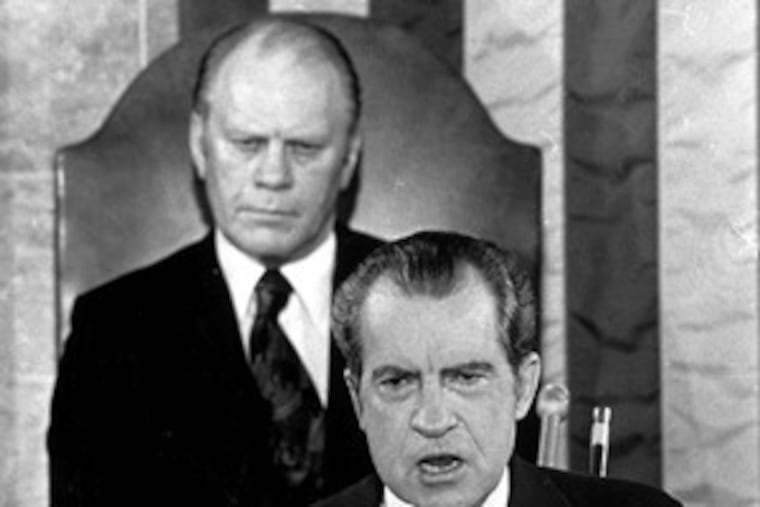Medical Mystery: Gerald Ford’s Philadelphia headache
The former present walked into the hospital under his own steam. A few hours later, however, things got worse.

Gerald Ford arrived to cheers at the Republican National Convention in the summer of 2000 at what is now the Wells Fargo Center in Philadelphia. The 87-year-old former president received a standing salute by convention delegates, recognizing a long career of service to the nation, culminating in the healing leadership he provided in the aftermath of the Watergate scandal.
Starting in 1949, Ford represented Grand Rapids, Mich., in the U.S. House of Representative for more than 12 consecutive terms, serving as minority leader from 1965 to 1973. After the resignation of Vice President Spiro Agnew, President Richard Nixon appointed Ford to take Agnew’s place. Eight months later, on Aug. 9, 1974, Ford landed in the Oval Office when Nixon resigned in disgrace after his abuses of power were revealed following a break-in at the Democratic National Committee headquarters at Watergate.
Ford, the only person to have served as both vice president and president without being elected to either office, soon pardoned Nixon, enduring major political outrage.
But by the time of the 2000 convention, his decision was seen as a needed balm for a nation in pain.
Hours after his warm cheering reception, Ford started to experience a severe headache, and thought it was due to a sinus problem. Shortly after midnight on the morning of Aug. 2, he visited the emergency room at Hahnemann Hospital, accompanied by his Secret Service detail. Ford walked in under his own power, and showed the physicians and nurses where his head pain was focused. Pain medications were administered and Ford was released after he sufficiently responded.
But by 9 a.m., he was back at the hospital complaining of dizziness, weakness in his left arm, and an inability to speak without slurring his words. His wife, Betty, reported that her husband felt ill earlier in the week. What’s more, she said, he appeared visibly tired and noticeably slurred his words at the convention.
What caused President Ford’s headache?
Solution
Hahnemann’s neurological intensive care unit admitted the former president. An imaging scan indicated he had suffered at least one stroke in the brain stem, perhaps two, in the rear of his head. After a battery of tests, he was listed in “serious and improving” condition. The prognosis was hopeful for full recovery.
Ford was treated with anticoagulants (blood-thinners) to diminish the possibility of future strokes, which would be especially dangerous at his age, doctors emphasized.
According to hospital doctors, Ford was “perfectly awake, functioning mentally — that’s not a problem."
A stroke is usually caused by a blood clot or atherosclerotic plaque blocking an artery in the brain. Cells beyond the blockage do not receive nutrients, and can be injured or die. In Ford’s case, the affected areas were in the lower back part of the brain where motor activity and balance are controlled.
Today, patients shown to have onset of stroke or transient ischemic attack (TIA) can quickly be started on medicines that reduce the risk of recurrent stroke by preventing blood clots in the brain and controlling blood pressure.
Ford made a quick recovery and went on to receive the Kennedy Library’s Profiles in Courage Award on May 22, 2001, related to the Nixon pardon.
Ford died Dec. 26, 2006 while at home in Rancho Mirage, Calif., after three hospital admissions for cardiovascular disorders earlier in the month. The diagnosis was diffuse arteriosclerosis with cerebrovascular and end-stage coronary artery disease and severe aortic valvular calcification disease.
At 93 years and 165 days, Ford had lived longer than any other U.S. president, his life span being 45 days longer than Ronald Reagan’s. Ford has since been surpassed by Jimmy Carter, who turned 94 on Oct. 1. Among vice presidents, only John Nance Garner, 98, and Levi P. Morton, 96, lived longer.
Allan B. Schwartz, M.D., is a professor of medicine in the Division of Nephrology & Hypertension at Drexel University College of Medicine.